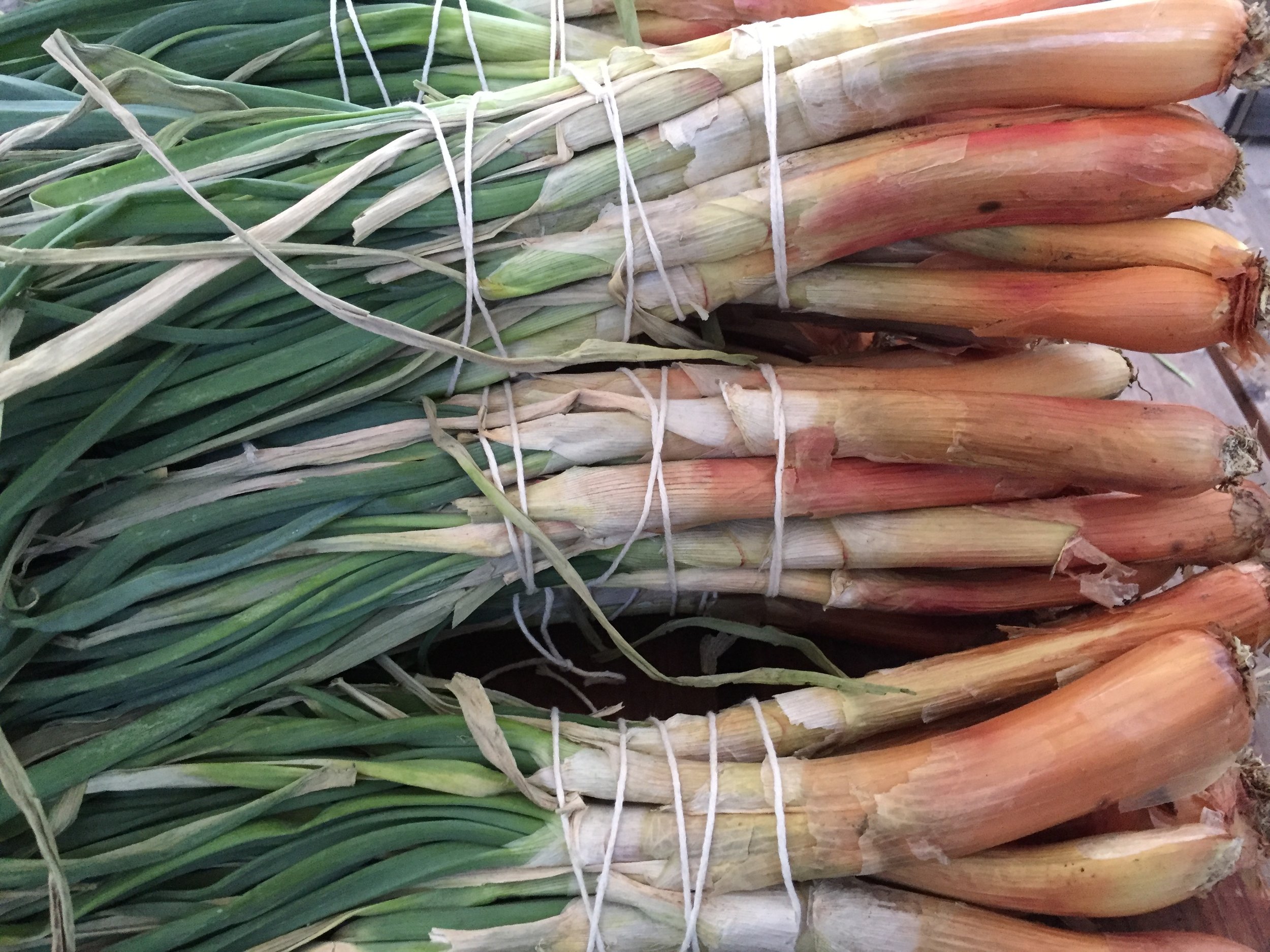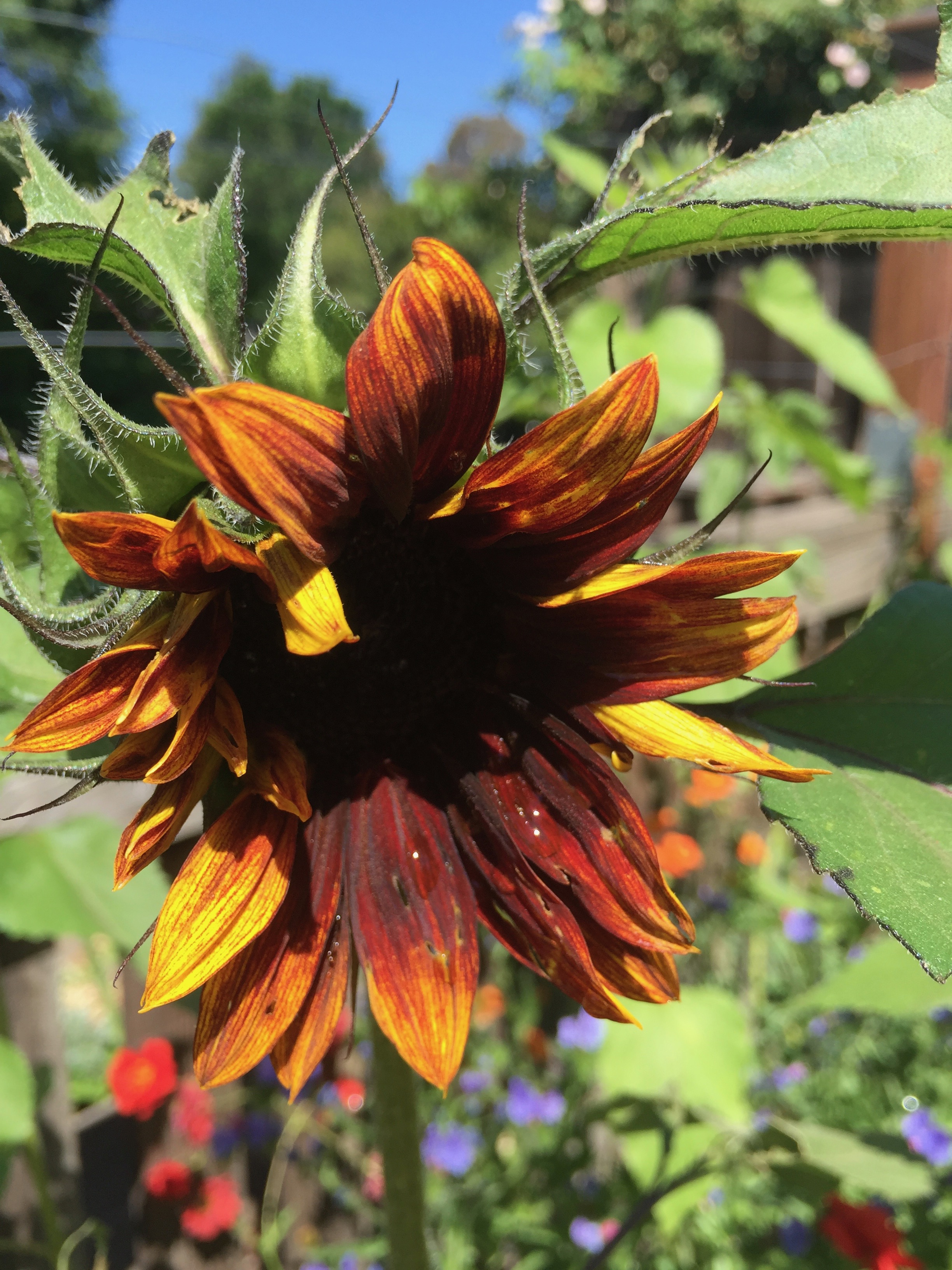When I pulled this season's shallots out of the ground a couple of weeks ago, my first impression was that it was a great harvest. The actual bulbs weren't developed as fully as I would have liked, but some had started to put up flower stalks, and all of them were wilted and clearly at the end of their growing time. So I had to pull them out. I hoped, after drying and curing, they'd look more like they were supposed to - more round in the bulb, not quite as skinny.
I took them down from my curing shelf (the top of the chicken coop) and bundled them this weekend. And I have to say, I'm not thrilled. In fact I'm somewhat disappointed. Easily half of the shallots were mushy to the touch, not firm like they should be; I had to compost those. And the half that seemed firm enough to eat are still on the skinny side. Not the plump, full, firm bulbs I'm used to.
So what happened?
I planted three allium crops last October for harvest this spring. Crop #1, leeks, were planted in the North Garden, where there had been both cabbage and beans before that. If you remember, the bush beans succumbed to spider mites and we had only a brief harvest. After that I added compost, then transplanted cabbage into that bed along with clover. Both did well and the clover continued as a companion crop, all winter, to the leeks. Plus, when I planted the leeks, I added more compost to the bed. And the leeks were a great success. We didn't have a huge amount, nor were they very large in size, but they were delicious and perfectly formed. So, no problems there.
Crop #2, garlic - my usual favorite variety, 'Inchilium Red' - was put into a bed in the South Garden that had housed tomatoes up until garlic planting. I did not add compost at that time for some reason. I did sow clover along with the garlic. The garlic came up quite well and seemed to be doing great; the clover never germinated. The garlic stayed the same all through the winter. When the earth finally warmed and the sun came out, it didn't start growing again like I expected it to. I gave it fertilizer and mulch, but nothing much else happened in that bed. The harvest was meager; we got about 75% of what we expected, and all the bulbs were much smaller than usual. Some never formed cloves, just made one larger clove. I also noticed numerous black aphids on the green part of the plant. So, the garlic was an almost total fail. We do have some bulbs that are usable, but we will go through them very quickly.
Crop #3, shallots - a new-to-us variety called 'Red' shallots - were put in a bed in the South Garden, which, like the garlic, had had tomatoes up until the day before. I do think I added compost to this bed. I seeded clover as well. Both the shallots and the clover grew wonderfully - an almost perfect growing season. But when I pulled out some clover that was about to go to seed, I noticed that space had been pretty tight in that bed; everything was really crowded. And, when I harvested the shallots, I also dislodged quite a few earwigs.
So. I've learned a few things. Always add compost after tomatoes!!!! (or how about always add compost period!) Tomatoes are heavy feeders and likely the soil was depleted. The clover, had it grown correctly in the garlic bed, would have helped add nitrogen, but still needed nitrogen to grow in the first place! The fact that it didn't germinate at all should have been a big red flag for me - I mean, clover isn't hard to grow. You people with lawns know what I'm talking about.
Also, I think some floating row cover over these crops would have helped. I didn't use any covers this winter as an experiment and I won't repeat that. Like everyone else in creation, we had a weird winter. In early February we had 80 degree weather. It only rained once between November and March. Then winter moved in and it rained all of March, hailed several times, and was around 25 degrees nearly every night. Row cover would have protected the crops from those extremes of weather.
Another thing - maybe it's best not to crowd alliums.
Another thing - maybe it's best to loosen the soil a little after tomatoes before adding the compost - just some broad-forking to assist with air exchange, no tilling or anything.
Well, live and learn. Hopefully next winter's crop will do better. Meanwhile, how lucky we are that we have grocery stores to supplement our harvests! If we had to rely on what we grew, we'd have some very bland meals without those alliums.
Now, on to some sunflowers.
I have three different kinds blooming right now, none of them very common, and I think all of them should be more used because they are my very favorites. All are from Renee's Garden.
This first is 'Sun Samba,' a variety which contains different sunflowers of different colors, so you get a variety, and some with very unexpected combinations. Isn't this one gorgeous, with it's tri-colored petals?
And this one is 'Cinnamon Sun.' I love its deep red petals and that inner ring of yellow which sets it all off.
And lastly, 'Chocolate Cherry,' with it's reddish-brown petals and inner ring of brighter red. You have to work to see this one in the garden, but what a reward when you do.
If you're tired of regular sunflowers, give these varieties a try - I think you'll love them!




